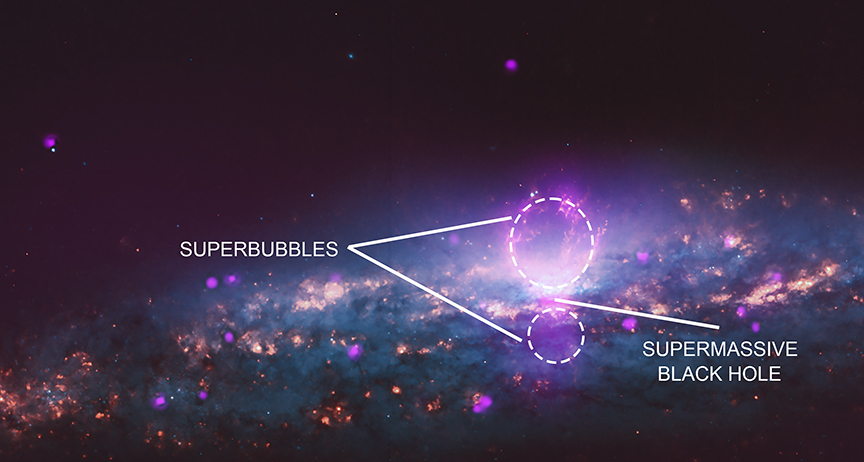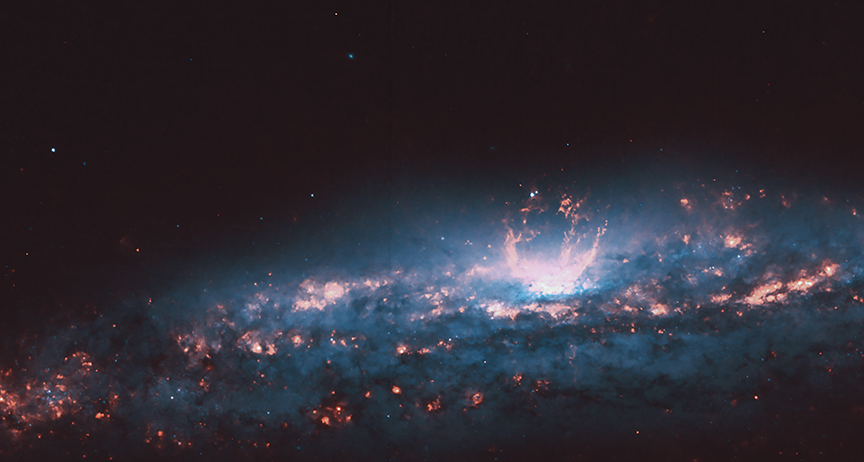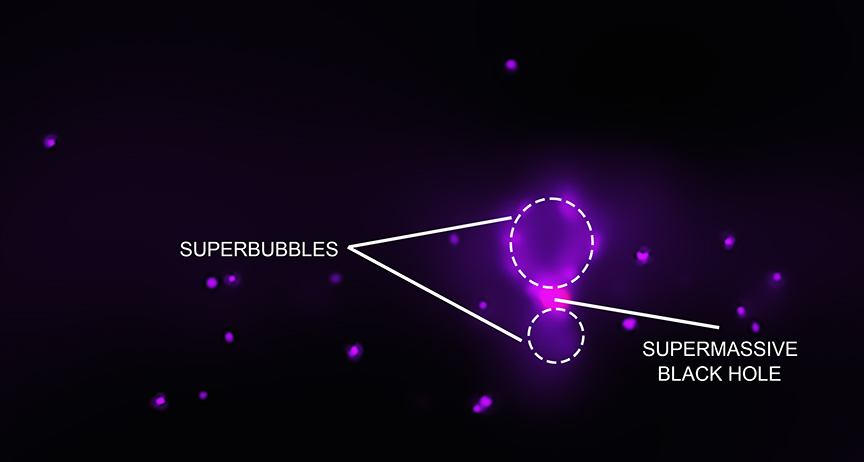The galaxy NGC 3079, located about 67 million light years from Earth, contains two “super-bubbles”. A pair of balloon-like regions stretch out on opposite sides of the center of the galaxy: one is 4,900 light years across and the other is only slightly smaller, with a diameter of about 3,600 light years. For context, one light year is about 6 trillion miles, or 9 trillion kilometers.

The super-bubbles in NGC 3079 are defined by X-ray, optical and radio emission. The super-bubbles are seen in the images below made from Chandra X-ray Observatory (purple and pink) and Hubble Space Telescope data (orange and blue). Chandra observations show that a cosmic particle accelerator in NGC 3079 is producing ultra-energetic particles in the rims of the super-bubbles.
_

Optical 
X-rays
NGC 3079’s super-bubbles are younger cousins of “Fermi bubbles,” first located in the Milky Way galaxy in 2010. Astronomers think such superbubbles may form when processes associated with matter falling into a supermassive black hole in the center of galaxy, which leads to the release of enormous amounts of energy in the form of particles and magnetic fields. Super-bubbles may also be sculpted by winds flowing from a large number of young, massive stars.
Source:chandra.harvard.edu
